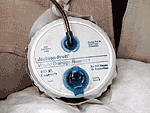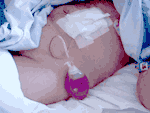Wound Drain
What is a wound drain?
A wound drain is typically a plastic tube that provides a way for unnecessary body fluids or air to flow out of the body from a wound. After surgery, some patients require wound drains. The wound drain is inserted while the patient is in the operating room receiving general anesthesia. The purpose of the drain is to remove fluid and/or blood from the area of surgery. This helps the healing process. Not all patients need wound drains following surgery. One end of the wound drain is placed within the wound and the other end may be connected to a suction collection device. The fluid may be collected in a drainage bag, plastic bulb, plastic carton, or onto a dressing.
How long is a wound drain used?
That depends on the type of surgery and the amount of fluid or blood draining from the wound. The surgeon closely evaluates the wound drain daily and decides when it should be removed. The nurses check on the drain frequently and empty it when necessary.
Does a wound drain hurt?
No. Usually the patient does not know that the wound drain is present unless they are told. The wound drain may sting when it is removed.
Are there any potential complications associated with the use of a wound drain?
The wound drain is usually not associated with significant complications.
 Wound drain (self-expanding device) to help
remove blood and fluid from the body.
Wound drain (self-expanding device) to help
remove blood and fluid from the body.
 Another style wound drain.
Another style wound drain.